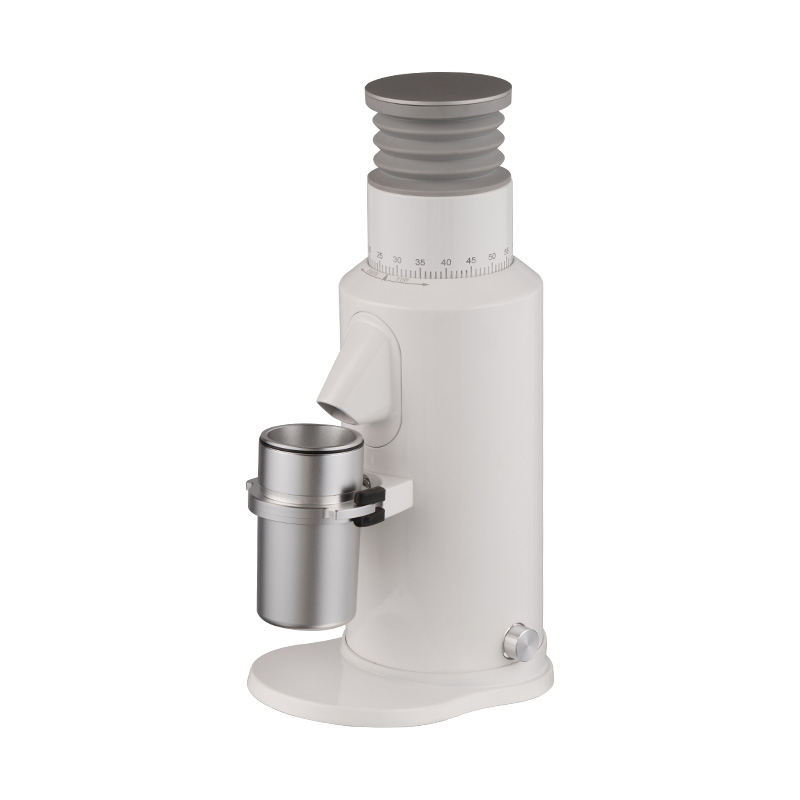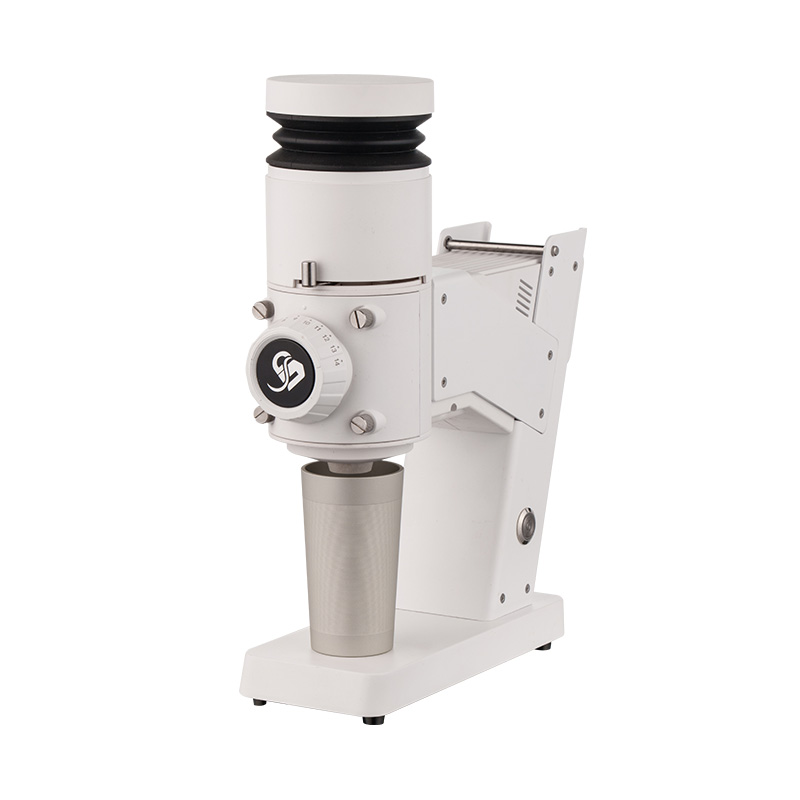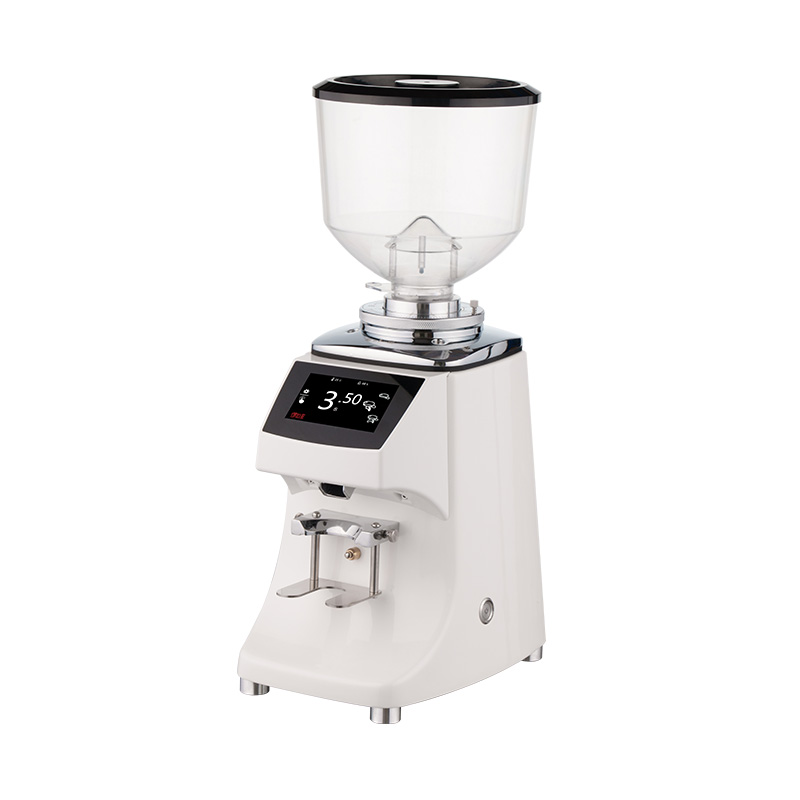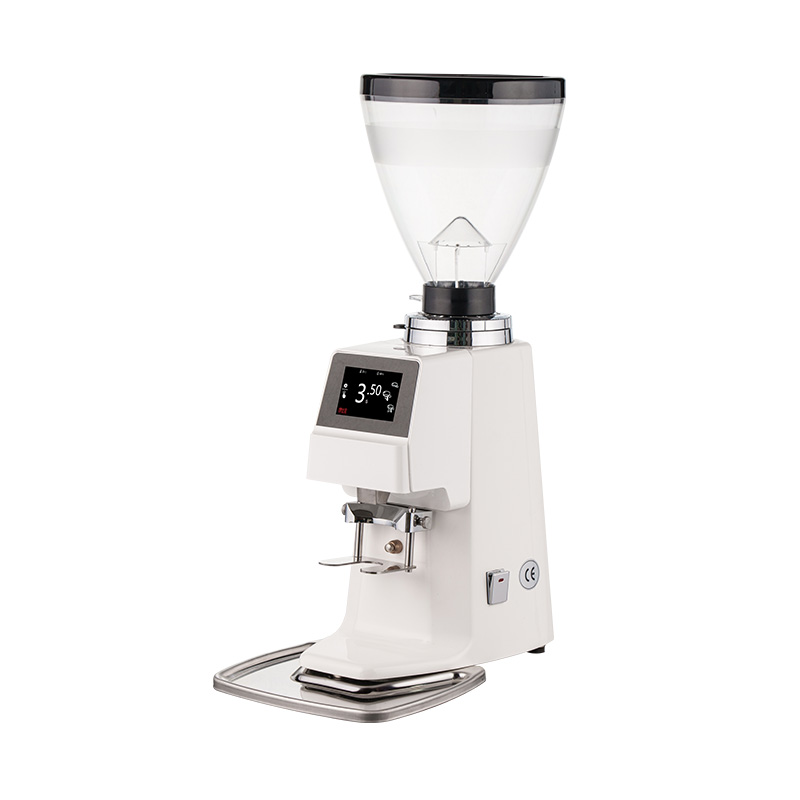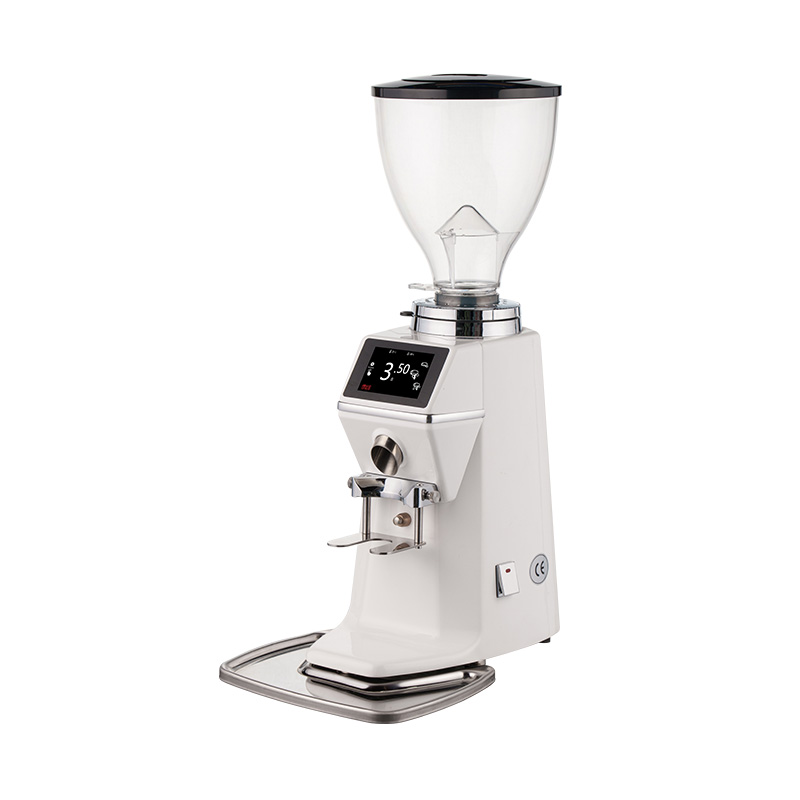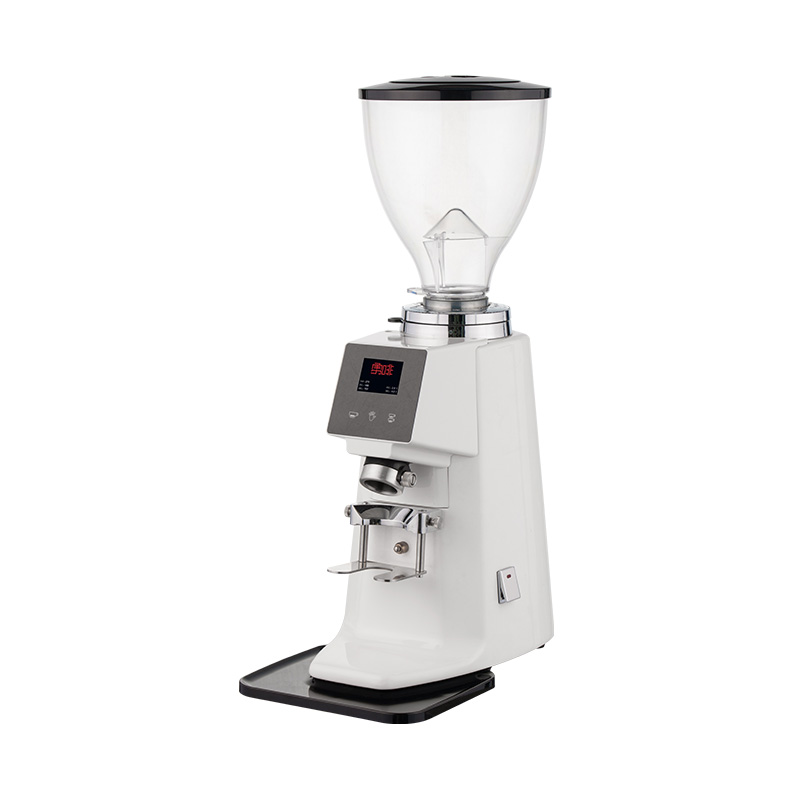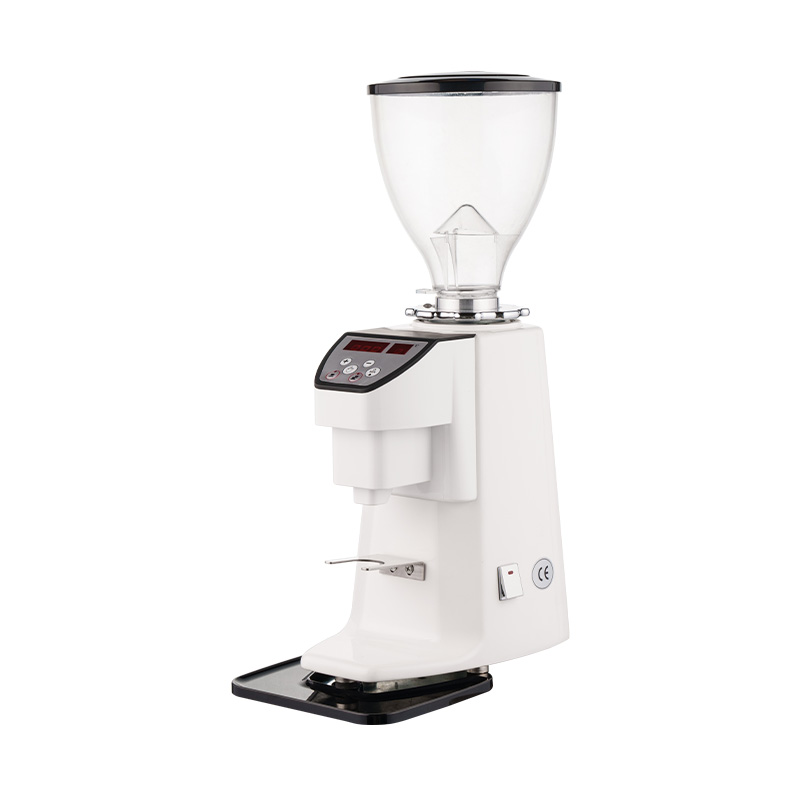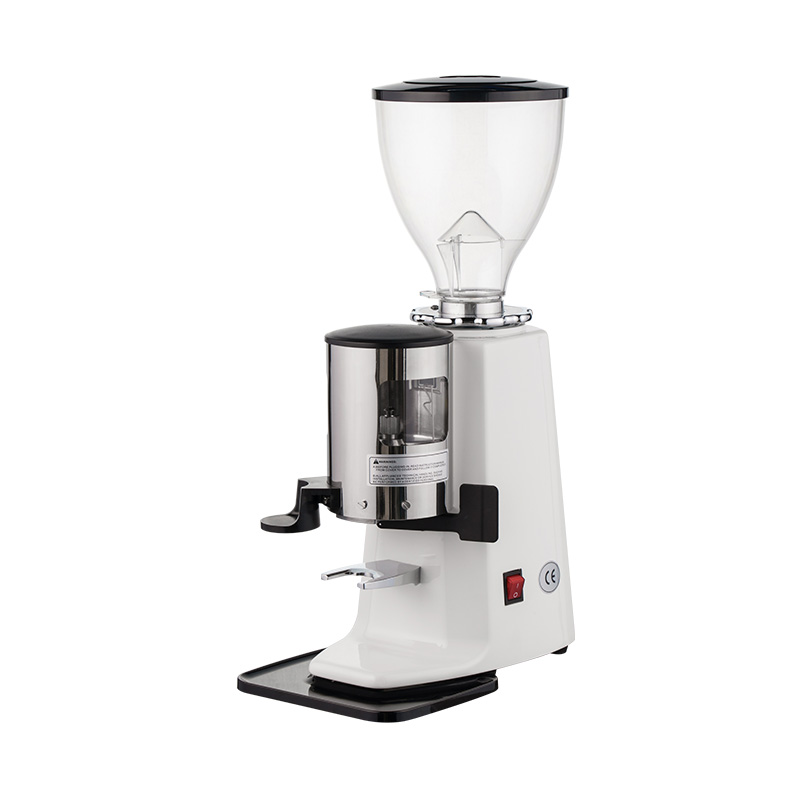We support OEM&ODM services, welcome to inquire
What are the characteristics of the flat blade of a coffee grinder that can monitor blade temperature compared to the conical blade?
This coffee grinder that can monitor blade temperature uses a 64mm extra-hard flat blade, which has significant differences in grinding consistency, thermal stability, and applicable scenarios compared to the common conical blade.
1. Grinding uniformity & particle distribution
The parallel arrangement of the flat blade allows the coffee beans to be subjected to more consistent cutting force during grinding, resulting in a more uniform particle distribution. This design can effectively reduce the difference between fine and coarse powder, and is particularly suitable for brewing methods that require high-precision extraction, such as hand-poured coffee and espresso. Due to the consistent particle size, the flavor of the coffee will be clearer, the taste will be clean and the layers will be distinct, which is especially suitable for showing the delicate flavor of single-origin coffee.
In contrast, the particle distribution of the conical blade is slightly wider, which may produce more fine and coarse powder mixed. This grinding method is suitable for brewing methods such as French press or American coffee that do not require high uniformity. In addition, due to the angle of the conical blade, some coffee beans may be squeezed instead of cut evenly, resulting in slightly uneven grinding results.
2. Grinding efficiency & heat control
The flat blade has a larger contact area, so the grinding speed is faster and the motor load is relatively high. However, this grinder is equipped with real-time blade temperature monitoring, which can effectively avoid overheating caused by high-speed operation and ensure that the coffee flavor is not affected. In addition, the structural design of the flat blade usually has a lower residual powder rate and is easier to clean and maintain.
The conical blade has a slower grinding speed, but due to the low speed, the heat generation is relatively small. However, for temperature-sensitive situations such as deep roasted coffee beans, long-term use may still cause heat accumulation and affect the flavor. The conical blade has a simpler structure and is relatively worry-free to maintain, but it is slightly inferior to the flat blade in grinding efficiency.
3. Applicable scenarios
The flat blade performs particularly well in scenarios that require high-precision grinding. For example, when making espresso, the flat blade can provide a more stable extraction pressure to ensure that the coffee oil is rich and the flavor is balanced. For hand brewing or siphon brewing, uniform particle distribution can bring more controllable extraction time, avoid over-extraction or under-extraction, and thus improve the overall quality of coffee.
Conical burrs are more suitable for brewing methods that do not require high grinding uniformity, such as French press or cold brew coffee. In addition, due to their simple structure and low noise, conical burr grinders are generally more popular with home users, especially when the budget is limited.
4. Durability and maintenance
The imported Laitai hard burrs used in this grinder have extremely high hardness and wear resistance, and their service life far exceeds that of ordinary burrs. Although the flat burrs have superior performance, they need to calibrate the parallelism regularly to ensure the uniformity of grinding, and the maintenance is slightly complicated. In contrast, the conical burrs have a simpler structure and are relatively worry-free for daily maintenance, but they may still wear out after long-term use, affecting the grinding effect.
-
Feedback

 English
English русский
русский
